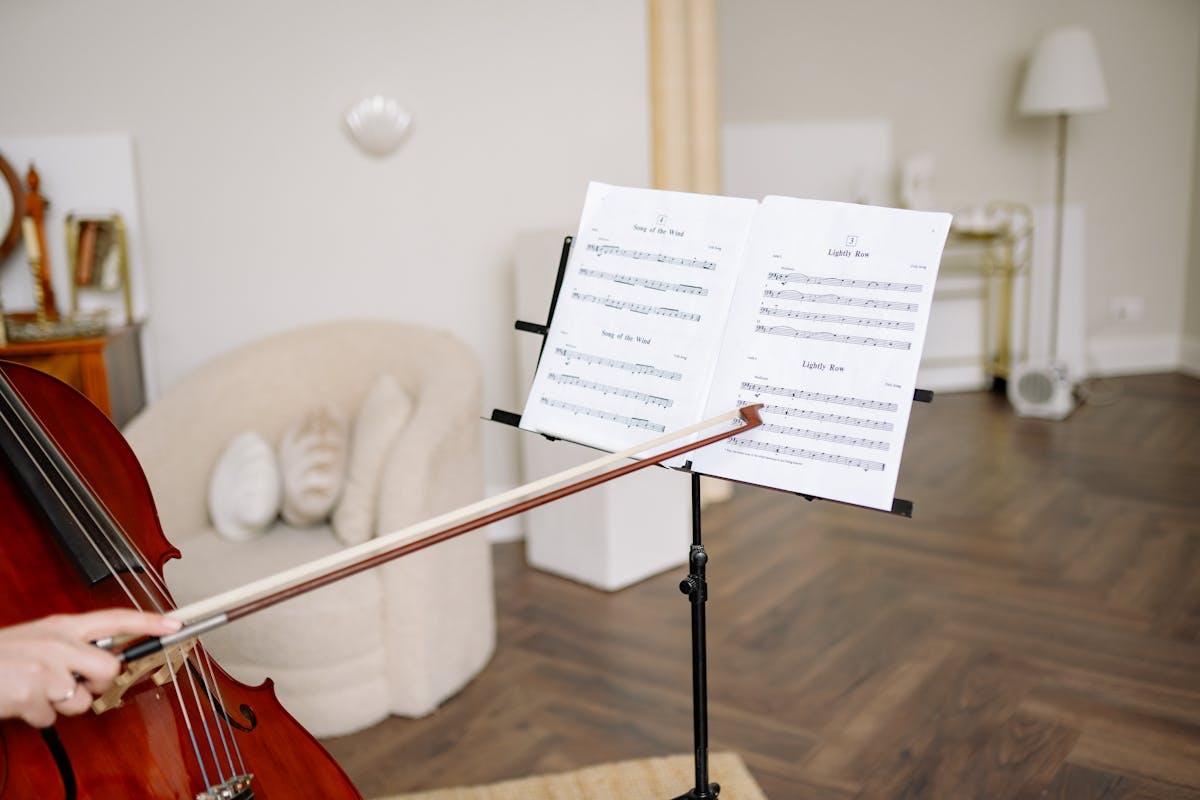Music stands, a staple in the arsenal of musicians, serve as indispensable tools for holding sheet music during performances and practice sessions. In this blog, we delve into the historical development and modern innovations of music stands, tracing their evolution from classic designs to contemporary advancements.
Ancient Origins of Music Stands
Long before the advent of modern music stands, musicians employed various methods to support their sheet music. In ancient civilizations, lecterns and improvised supports were utilized to hold scrolls or manuscripts during musical performances.
Classical Era Innovations
In the classical era, wooden music stands became ubiquitous in concert halls and chamber ensembles. These stands were not merely utilitarian but were also symbols of artistic expression. Crafted with intricate designs and adorned with ornate details, they exemplified the exceptional craftsmanship of the period.
Beyond their practical function as a music sheet holder, these stands contributed to the overall aesthetic of musical performances, enhancing the ambiance with their elegance. Whether in grand concert venues or intimate chamber settings, the presence of these beautifully crafted wooden stands added a sense of refinement and sophistication to the musical experience. Their significance extended beyond mere utility, serving as visual cues of the meticulous attention to detail and artistic sensibility that characterized the classical era's approach to music and performance.
Industrial Revolution Impact
The industrial revolution transformed music stand design by introducing metal stands. Mass production techniques made stands cheaper and easier to get, while portable designs suited the needs of traveling musicians. Metal stands replaced traditional wooden ones, making them lighter and more durable. This change revolutionized the music industry, making stands available to more people and changing how musicians performed.
Portable designs allowed musicians to carry their stands easily, benefiting those who traveled for performances or rehearsals. The transition to metal stands marked a significant shift in manufacturing and accessibility, shaping the way musicians interacted with their sheet music. Overall, the industrial revolution's impact on music stand design improved accessibility, affordability, and convenience, revolutionizing the way musicians practiced and performed their music.
20th Century Advancements

In the 20th century, music stand technology saw more progress, with the introduction of lightweight materials such as aluminum and plastic. These materials made stands easier to carry and handle. Additionally, folding and collapsible designs were developed, making stands even more portable and adaptable to various musical styles and performance locations.
Musicians across different genres and venues benefited from these advancements, as they could easily transport and set up their stands wherever they performed. The evolution of music stand technology during this period greatly improved convenience and flexibility for musicians, allowing them to focus more on their music and less on the logistics of equipment. Overall, these innovations represented a significant leap forward in the design and functionality of music stands, catering to the diverse needs of performers in the modern era.
Integration of Technology
In recent years, technology has significantly influenced the evolution of music stand design, revolutionizing their functionality and versatility. The integration of digital displays for sheet music has replaced traditional paper scores, offering musicians a more convenient and environmentally-friendly way to access and organize their music repertoire. Bluetooth connectivity and app integration further enhance the capabilities of music stands, allowing seamless synchronization with other devices and facilitating collaborative performances.
Additionally, the inclusion of LED lighting features addresses the practical needs of musicians by providing adjustable illumination in low-light settings, ensuring optimal visibility during performances. These technological advancements have transformed traditional music stands into sophisticated, high-tech accessories, catering to the demands of modern musicians and enhancing their overall experience in rehearsal and live performance scenarios.
Ergonomic Considerations
Today's music stands focus on comfort and practicality with adjustable features like height and tilt, ensuring musicians can play without strain during long sessions. Stability and weight distribution are also crucial, accommodating the different requirements of musicians across various styles. These ergonomic considerations are especially important for performers who may spend hours rehearsing or playing gigs. By prioritizing comfort and stability, modern music stands cater to the diverse needs of musicians, whether they're practicing in a studio or performing on stage.
The adjustable features allow musicians to customize their setup for maximum efficiency and comfort, while the stability ensures that their sheet music stays in place even during energetic performances. Overall, these ergonomic features contribute to a more enjoyable and productive musical experience for performers of all levels and disciplines.
Sustainable Practices
With sustainability becoming increasingly important in contemporary manufacturing, music stand producers are embracing eco-friendly materials and production processes. Modular designs facilitate easier repairs and component replacement, contributing to the longevity of stands while minimizing environmental impact.
Future Trends and Innovations
Looking ahead, the future of music stand design holds exciting possibilities. Predictions include continued integration with digital devices and technologies, as well as a focus on user-centered design and sustainability to meet the evolving needs of musicians and environmental concerns.
A Must-Have Music Stand
Looking to elevate your musical practice or performance experience? Look no further than KraftGeek's Bravo Music Stand. This stand is designed with durability and versatility in mind, featuring adjustable height and angle settings to accommodate musicians of all sizes and preferences. Its lightweight and portable design make it perfect for musicians on the go, while its sleek aesthetic adds a touch of sophistication to any stage or practice space. With rave reviews from musicians worldwide praising its reliability and functionality, the KraftGeek Bravo Music Stand is a must-have accessory for any serious musician looking to enhance their setup.
Conclusion
The evolution of music stands from classic designs to modern innovations reflects the dynamic nature of the music industry. Understanding this evolution is essential for musicians and music enthusiasts alike, as it underscores the significance of these seemingly humble accessories in shaping the landscape of music performance and creation. As we continue to embrace new technologies and sustainable practices, the timeless role of music stands remains ever-important in supporting and enhancing musical endeavors.


